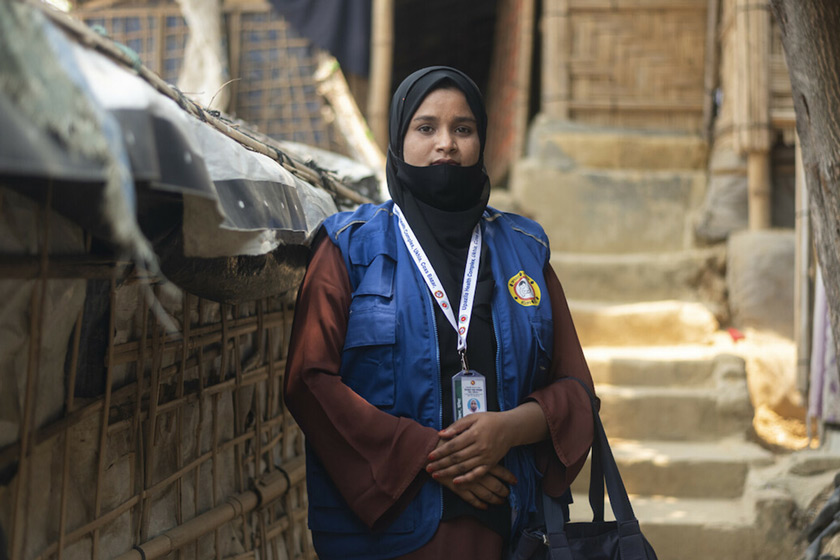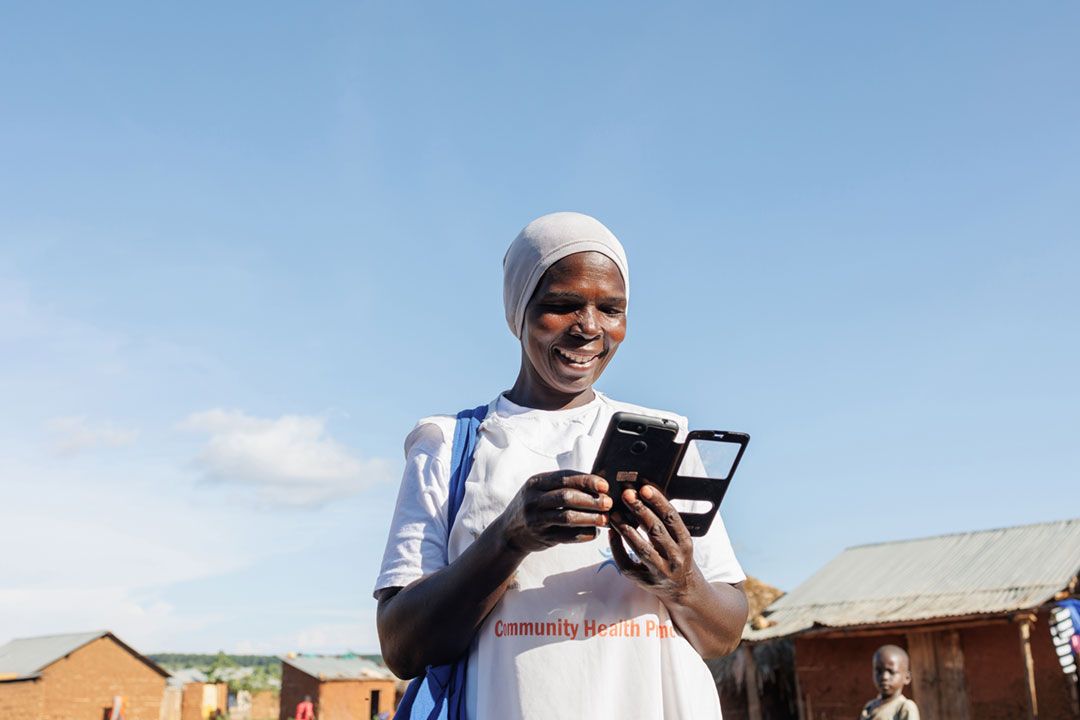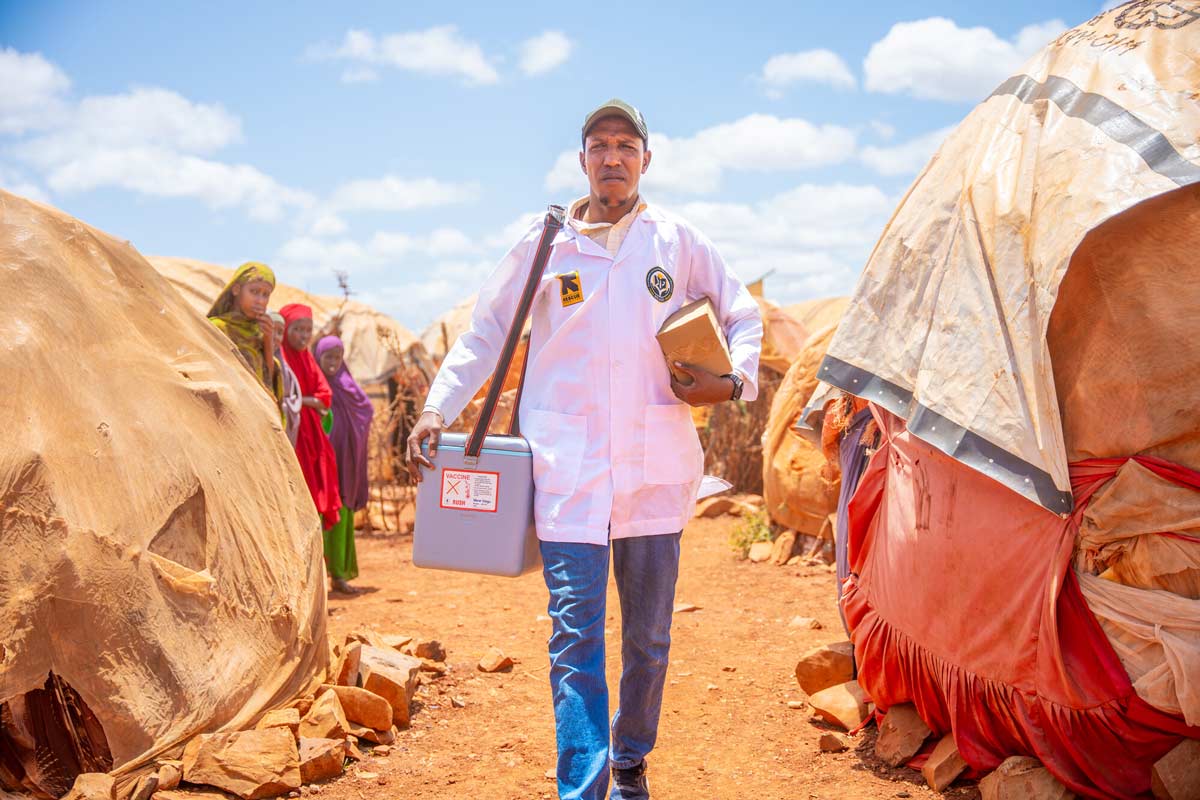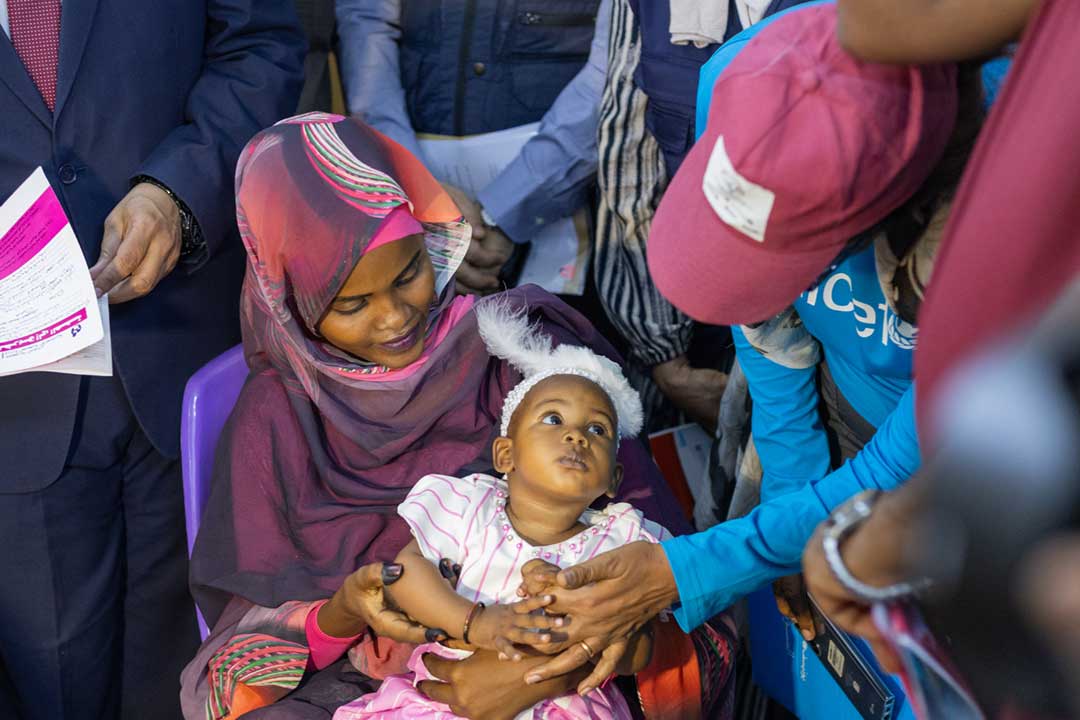Team effort: reaching internally displaced people in Burkina Faso
Millions of people are being displaced within their own countries because of conflict or other humanitarian disasters. Ensuring that such internally displaced persons (IDPs) have access to immunisation services requires a strong commitment not to leave anyone behind, close coordination across agencies and respect for IDPs’ wider needs.
- 20 March 2024
- 6 min read
- by Ian Jones , Charlotte Mbuh

According to the UNHCR, the number of people forcibly displaced from their homes has increased from 41 million in 2010 to 108 million by the end of 2022 – a rise of more than 150%. Of these, an estimated 62.5 million were internally displaced persons (IDPs).
Delivering immunisation and other health services in areas affected by conflict is highly challenging (see "Treading a fine line: Immunisation in conflict settings"). But there is a secondary challenge for the more peaceful areas in which IDPs settle. Through the Movement for Immunization Agenda 2030 (IA2030) peer learning programme facilitated by the Geneva Learning Foundation, Samuel Bourgou shared his experience of supporting IDPs who had settled in his district in Burkina Faso, and how he and his team were able to greatly increase vaccine coverage among displaced children.
In 2015, large parts of Burkina Faso were hit by armed conflict, which continues to this day. The area in which Bourgou works, Boussoma District, has been relatively unscathed and has received an influx of thousands of IDPs. They have settled in a mix of formal and informal camps or are accommodated within the local community.
Official figures suggest that around 30,000 IDPs have moved into the district. However, this is almost certainly an underestimate, as it includes numbers just from 12 official IDP camps. There are a further 19 unofficial camps, plus the people living among the local community.
When people are displaced, a major challenge is disruption of children's immunisation schedules. They may have received their first shots in their home areas, but are at risk of not receiving the full set of shots needed to provide complete protection.
Bourgou set himself the challenge of reducing "dropout" rates among IDP children in Boussoma District. He focused on disruption between BCG (given soon after birth) and MR1 (measles- and rubella-containing vaccine, given at nine months), and for pentavalent vaccination (which protects against five infections and is given at two, three and four months of age in Burkina Faso).
The first task was to develop a more accurate mapping of IDP populations, so that even the unofficial camps and people living in the local community could be included in microplanning of immunisation services. This required extensive consultation with groups such as community health workers, head nurses and IDP site managers and leaders, who are the eyes and ears on the ground.
A further challenge was to work out which vaccines children had received and which they had missed, often in the absence of any formal records because of the haste in which families had fled.
"As many did not have a vaccination card, we often had to reconstruct their vaccination history by talking to them and their parents, and by checking for BCG scars to find out which vaccines they had received so far."
The official sites, Bourgou suggests, are well organised, and he and his team were able to liaise with government officials managing the site, embed community health workers and traditional leaders to raise awareness, and plan vaccination activities. Children in unofficial camps and integrated in the local community are harder to find. Head nurses have had to undertake time-consuming house-by-house mapping to locate them.
It was after participating in Teach to Reach and other peer learning activities of the Movement for Immunization Agenda (IA2030) that "we came up with the idea of setting up a registration book handled by community health workers at each IDP site," Bourgou explains.
Immunization activities focus mainly on outreach. Fixed vaccination points are set up in well frequented sites and sessions are announced in advance. Tetanus and diphtheria vaccination is also offered to pregnant women. Resourcing was initially provided by external partners, including WHO and UNICEF, and the team has also worked with an NGO focusing on nutrition to integrate immunisation with their work.
"Outreach is a critical aspect of our strategy, as we cannot expect the displaced families to come to fixed facilities. We organise vaccination sessions in the camps and also undertake sensitisation activities to raise awareness of the need for vaccination and the services on offer."
Another practical challenge has been data management. Burkina Faso's data systems did not have the scope to record IDP status, so new paper-based records had to be created. In addition, although immunisation in Burkina Faso focuses primarily on the first two years of life, catch-up activities include children up to age five, as recommended by WHO.
Have you read?
These painstaking efforts have had a big impact, says Bourgou, leading to large falls in dropout rates.
"Through a great team effort, we were able to have a big impact on dropout rates within the IDP camps. We were able to reduce the BCG1/MR1 dropout rate from 20% to 5.5% and the Penta1/ Penta 3 dropout rate from 11% to 4.2% in the first quarter of 2023. Overall coverage rates are very satisfactory – 97.7% for BCG, 98.2% for Penta1, 93.6% for Penta3 and 91.6% for MR1."
Several factors contributed to this success, he suggests. As well as the commitment of the Burkina Faso Government to help IDPs, local immunisation leaders have been strongly supportive of the work. A participatory approach was important for establishing trust with IPDs, bolstered by a focus on all their needs, not just immunisation.
"Given their experience, it is not surprising that displaced populations are very suspicious, and we have had to work hard to build trust and ensure they are involved at all stages."
Above all, it has been a coordinated approach that has proved critical. In a complex context, multiple groups of stakeholders are involved. Strong efforts are required to ensure close collaboration and cooperation, focusing on the needs of the displaced families.
Despite many social challenges, including conflict, Burkina Faso maintains vaccination coverage levels that are mostly well above the regional average – 91% for diphtheria, typhoid and pertussis-containing vaccine (DTP3) in 2022, against a regional average of 72%. The efforts of Bourgou and the many people he works with are helping to ensure that even those displaced from their homes are not denied this life-saving service.
Learn more about Teach to Reach and the Movement for Immunization Agenda 2030 (IA2030).
Download and read the complete IA2030 case study:
The Geneva Learning Foundation. Immunization Agenda 2030 Implementation Case Study 21. Samuel Bourgou – Reaching vulnerable displaced populations in Burkina Faso. Geneva: The Geneva Learning Foundation; 2023. Licence: CC BY-NC-SA 4.0 IGO. https://doi.org/10.5281/zenodo.8398641
French version: La Fondation Apprendre Genève. Étude de cas sur la mise en œuvre du Programme pour la vaccination à l'horizon 2030 n° 25. Samuel Bourgou – Atteindre les populations vulnérables déplacées au Burkina Faso. Genève : La Fondation Apprendre Genève ; 2023. Licence : CC BY-NC-SA 4.0 IGO. https://doi.org/10.5281/zenodo.8421412









